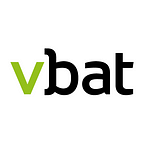Creative Knowledge Share
Typography by Dalton Maag
By Maarten van Disseldorp
Creative at VBAT
Creative Knowledge Share is an internal VBAT platform to enlighten and educate. These short sessions provide the opportunity for our creatives to get inspired and brush up on new skills. Previous talks have included ‘Beer cues for design’, an Adobe CC 2015 Masterclass and ‘Making designing for Microsoft Powerpoint less painful’. This latest instalment revolved around typography and was kindly hosted by Dalton Maag.
As such Dalton Maag London Creative Director Lukas Paltram came to our office recently to give an insightful presentation during the lunch hour.
Dalton Maag is a household name in the field of creating bespoke typefaces for brands. Clients include Amazon Kindle, Lush, Nokia, Rio Olympics 2016, Tesco, Tui, and many more. Besides custom fonts and a catalogue of 30 library fonts, they also do font modifications and logo refinements for design agencies.
Lukas ran us through some of these examples to show the level of detail involved and then switched to a fun bit of type history lessons.
Early means of communication range from Lascaux’s famous cave paintings, Egyptian hieroglyphs, Cuneiform (spijkerschrift in Dutch) to the Phoenician alphabet.
Ever since Roman times not much has changed to the alphabet as we know it today. Just 3 characters have been added; J, U and W.
People still introduce new characters however. A recent prime example is the Euro sign. Due to (smart)phones the way we use text and images has changed. Sentences are full of abbreviations and decorated with emoji.
Lukas continued his talk with two case studies in a more in-depth way: Intel Clear and Lush Handwritten.
Intel Clear
As the name implies, Intel Clear has been designed with ultimate legibility in mind. A corporate font that performs well on any device, ranging from your old computer and ancient browser and to the latest smart watch and up to 5K screen.
Up until recently fonts were designed for print first, but now many adopt a digital first approach. From a smallest device and up.
Another valuable lesson here is to determine the scope in terms of weight right from the start. Do you really need the Thin version all the way to the Black? If you decide later on that you also needed a Hairline or Ultra Black this causes issues. Whereas producing intermediate steps, say between a Regular and Bold to create a Semibold, it’s fairly straight forward. This is known as interpolating.
Lush Handwritten
On the other side of the spectrum Lush Handwritten is a vastly different typeface from Intel Clear. Lush’s visual identity is unique due to actual handwritten black and white signs. It works beautifully in a retail environment, but for online communication a solution had be found. Artwork from their top sign writers was digitised and crafted into one single script. Clever programming built in makes sure the font retains spontaneity as if truly handwritten. This is achieved by incorporating several alternates cuts of the most used letters, as well as ligatures; connected characters. On top of that the typeface recognises a specific character even over multiple lines, to prevent having the same glyph (letter shape) repeated vertically.
Lush Handwritten is great example of the importance of typography in branding.
Instantly recognisable with a personal touch.
Thanks to Lukas for sharing your knowledge with us.
If you enjoyed reading this, please click “Recommend” below.
This will help to share the story with others.
Follow VBAT on Twitter | Like us on Facebook
written by Maarten van Disseldorp
Creative at VBAT
